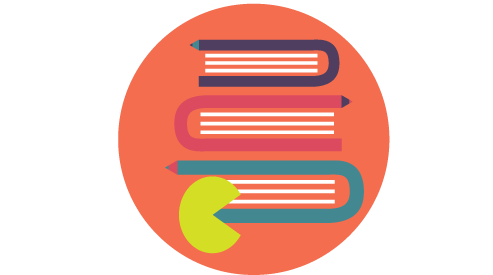Learning and Assessment

Figure 9 Learning and Assessment [edited and adapted by S. Bezzina] (Freepik #7 n.d.)
Assessment plays a key role in any educational endeavour (Brown and Knight 1994, Murphy and Torrance 1988, Taras 2005). However, the way assessment is defined, designed and implemented is highly dependent on the purpose and perspective adopted by the stakeholder/s; including the students, teachers, parents and policy-makers, in the context of interest (Bloxham and Boyd 2007). For instance, in defining assessment, Pellegrino and colleagues (2001) and Popham (2006), focus on educators as the sole consumers of the outcome of assessment in the form of a set of inferences about students’ knowledge. In contrast, Sadler (1989) and McDonald and Boud (2003) shift their emphasis towards the active and critical role of the learner in assessment, since in order to understand ‘appropriate standards, students have to be able to compare their actual levels of performance with these standards’ (Sadler 1989, p 130).
The conflicting purposes described above, gave rise to different forms of assessment, underpinned by philosophies of learning and assessment (Bloxham and Boyd 2007). Scriven (1976) first suggested two broad objectives and functions of evaluation in curriculum planning; namely those having summative and formative roles (Scriven 1976). Consequently, the two terms were also applied to the evaluation of teaching and learning (Bloom et al 1971) and have ever since become central to assessment in education. In its basic form, a summative assessment generally occurs ‘at the end of a course or program of study in order to measure and communicate pupil performance for purposes of certification and (latterly) accountability’ (Torrance and Pryor 1998, p 8). Formative assessment appears in ‘activities undertaken by teachers and/or by their students, which provide information to be used as feedback to modify the teaching and learning activities in which they are engaged’ (Black and Wiliam 1998, pp 7-8).
A key component in both summative and formative assessments is the information acquired about learning and teaching (Harlen 2005). This makes both, the ‘ends of the same continuum’ (Brown 1999, p 6). In fact, Brown (1999) argues that in reality, ‘no form of assessment is purely summative or formative’ (Brown 1999, p 7). Even the marks or grades derived from summative end-of-year examinations, give some sort of feedback to both the students and teachers, which can be eventually used in view of future learning and teaching activities. Thus, one of the primary distinctions often made between summative and formative; that is the different purposes and effects resulting from these two forms of assessment (Sadler 1989), can in fact be explained in terms of a complementary relationship, as an assessment designed to accomplish a summative purpose, can yield resulting effects which are formative in nature (Brown 1999). This view is also supported by Taras (2005), who suggests that both summative and formative assessments are essentially the same process (Taras 2005). She argues that formative assessment is not possible without a preceding summative judgement of students’ work quality or performance, which could either be implicit or explicit (Taras 2005). Moreover, and more importantly, a balanced interplay between the summative and formative functions of assessment ‘which brings the many and various strands of assessment together in a coherent way’ (Hounsell et al 2007, p iv), can generate and possibly enhance integrative assessment practices (Hounsell et al 2007), in an assessment for learning approach (Taras 2005). In fact, Black and colleagues (2003) propose the formative use of summative assessment as a main tenet for implementing effective formative assessment practices (Black et al 2003). Developing such synergies between summative and formative procedures strengthens not only the assessment process itself, but also the learning aspects of an increasingly learning-oriented assessment (Carless 2007).
The functions and effects of both summative and formative assessments, in all their different forms, have an impact on students’ learning, either directly or indirectly (Boud 1995, Brown 1997, Rust 2002). This could be explained by the fact that fundamentally, assessment is a ‘moment of learning’ (Black and Wiliam 1998, p 30), which further reinforces their mutual relationship and blurs even more the conceptual and practical boundary between the two. In its essence, Ramsden (1992) suggests that from ‘our students’ point of view, assessment always defines the actual curriculum’ (Ramsden 1992, p 187) and thus determines the kind and degree of learning that occurs. In response to an early academic interest in the field of assessment around its summative function (Stiggins 2005), a seminal meta-analysis of 250 empirical studies conducted by Black and Wiliam (1998), uncovered considerable learning gains for students who are formatively assessed (Black and Wiliam 1998). However, Dunn and Mulvenon (2009) argue that the empirical evidence presented by Black and William (1998) is not sufficient to draw definite conclusions or make substantive claims. Amongst others, they cite uneven data quality, small sample sizes, limited participant diversity and most of all insufficient details about the control and experimental interventions (Dunn and Mulvenon 2009). More recent empirical research (Araceli Ruiz-Primo and Furtak 2006, Wang 2007, Wiliam et al 2004, Wininger 2005), which suggests a positive impact of formative assessment on students’ learning, exhibits similar methodological limitations (Dunn and Mulvenon 2009).
The interrelationship between the summative and formative functions of assessment and the potential learning gains involved, have also led to a number of assessment for learning frameworks and models (Gibbs and Simpson 2004-5, Nicol and MacFarlane-Dick 2006, Rowntree 1987). Table 1 (adapted from Bezzina 2013) summarises the common themes and key terms emerging from the different principles and guidelines, obtained through a thematic analysis of the relevant literature, based on 12 different sources (Birenbaum et al 2006, Black and Wiliam 2009, Boud 2007, Carless 2007, Chickering and Gamson 1991, Crooks 1988, Gibbs and Simpson 2004-5, Higher Education Academy (HEA) 2012, Nicol and MacFarlane-Dick 2006, Rowntree 1987, Rust 2007, Sadler 1989).
Table 1 Assessment for Learning Themes and Key Terms (adapted from Bezzina 2013)
Feedback
corrective, timely, appropriate, acted upon, forward-looking, support, quality, acted upon, accessible, formative, prompt, sufficient
Progress
monitor, mastery, accomplishment, achievements, performance
Learning
productive, active, appropriate, participative, experience, contextual, responsive, process
Task
appropriate, time, effort, worthwhile, valued, sufficient, varied, authentic, diverse
Criteria
engagement, explicit, standards, understanding, quality, transparent, goals, self-regulation
Dialogue
peers, interaction, contact, reciprocity, cooperation, participation
Self
motivation, self-esteem, self-evaluation, self-assessment, active, agent, diverse
The analysis of the different frameworks and models reveals 7 common themes central to an assessment for learning, running through literature and research. It is evident that feedback is not only fundamental to formative assessment but is essential to effective learning in general (Carless 2006, Hattie and Timperley 2007). Good feedback which is attended to and acted upon by the learner (Gibbs and Simpson 2004) facilitates and possibly accelerates the student’s learning performance and progress (Hounsell 2007, Sadler 1998). This is achieved through ‘sequences of tasks that progressively and realistically challenge learners’ (Boud and Molloy 2012, p 10) and lead to a productive learning activity (Chickering and Gamson 1987). Engaging with clear task goals, criteria and standards (Rust et al 2005, Sadler 1989), allows students to develop both self-regulated learning skills (Boud 2000, Nicol and Macfarlane‐Dick 2006) and collaborative connoisseurship (Hounsell et al 2007, O’Shea and Fawns 2014), thus improving the quality of their work (Carless 2007).
Click below to continue your journey through literature:
Figure 7 Continue your journey through the Review of Literature [edited and adapted by S. Bezzina] (Freepik #4 n.d.)



